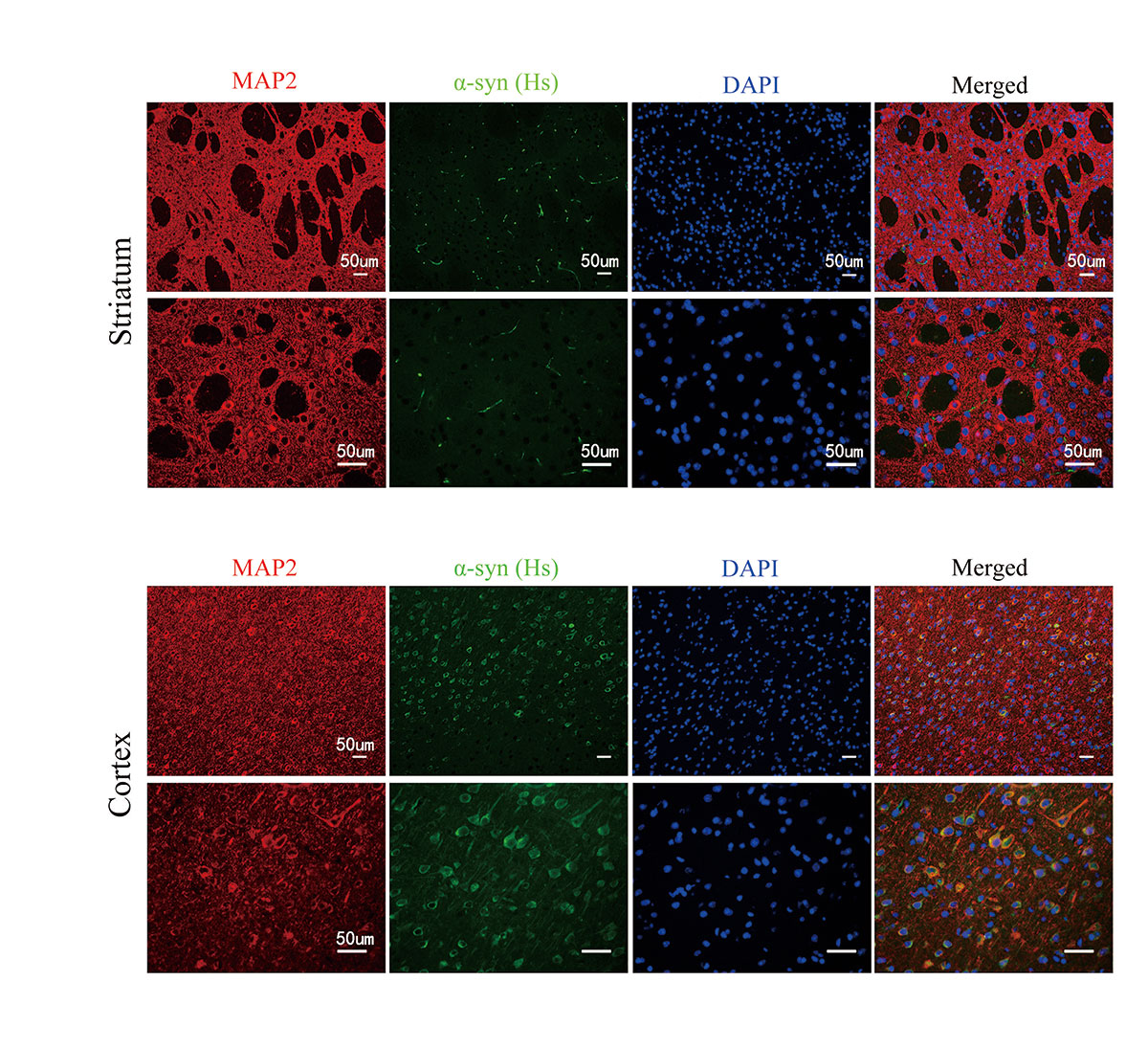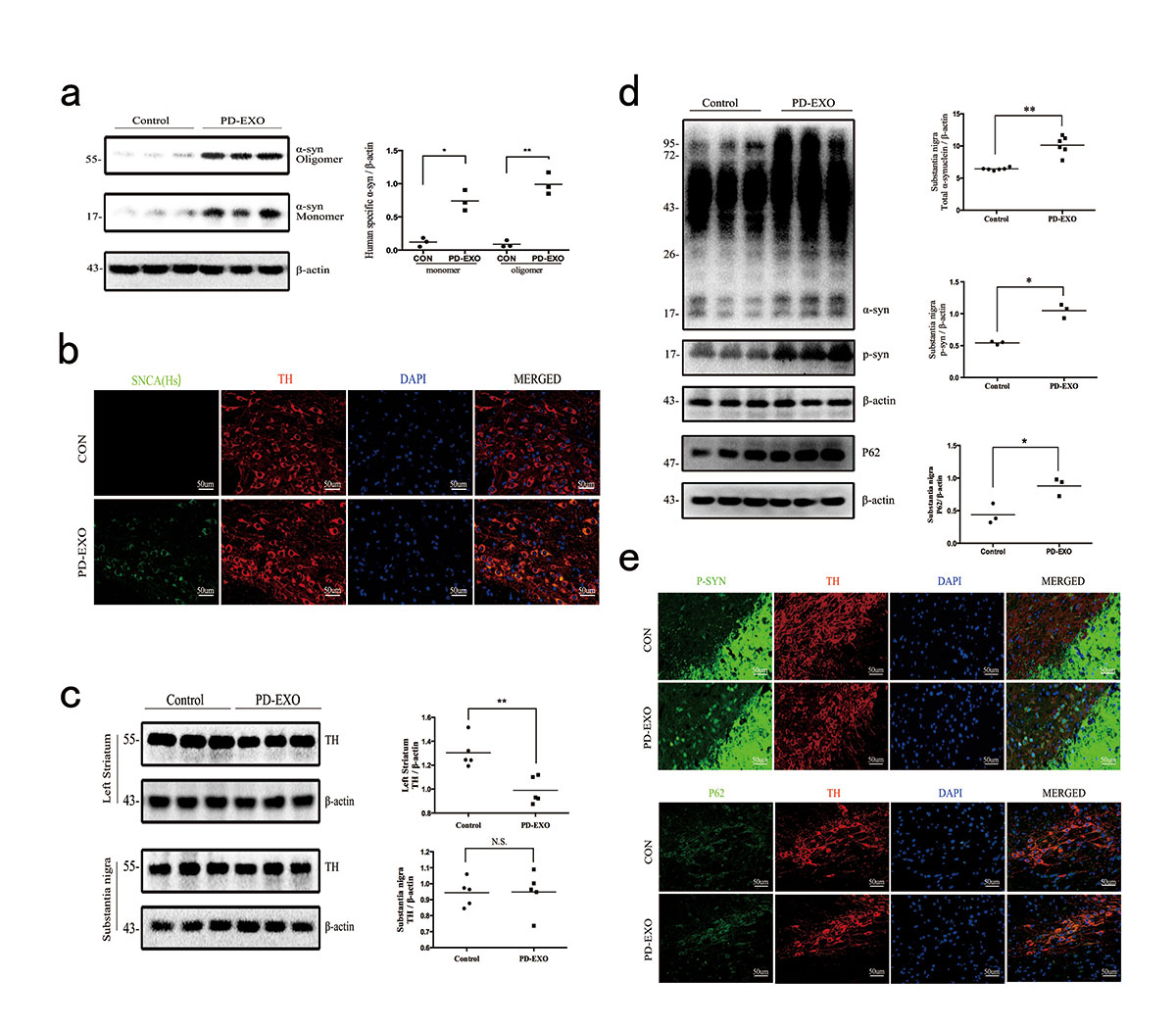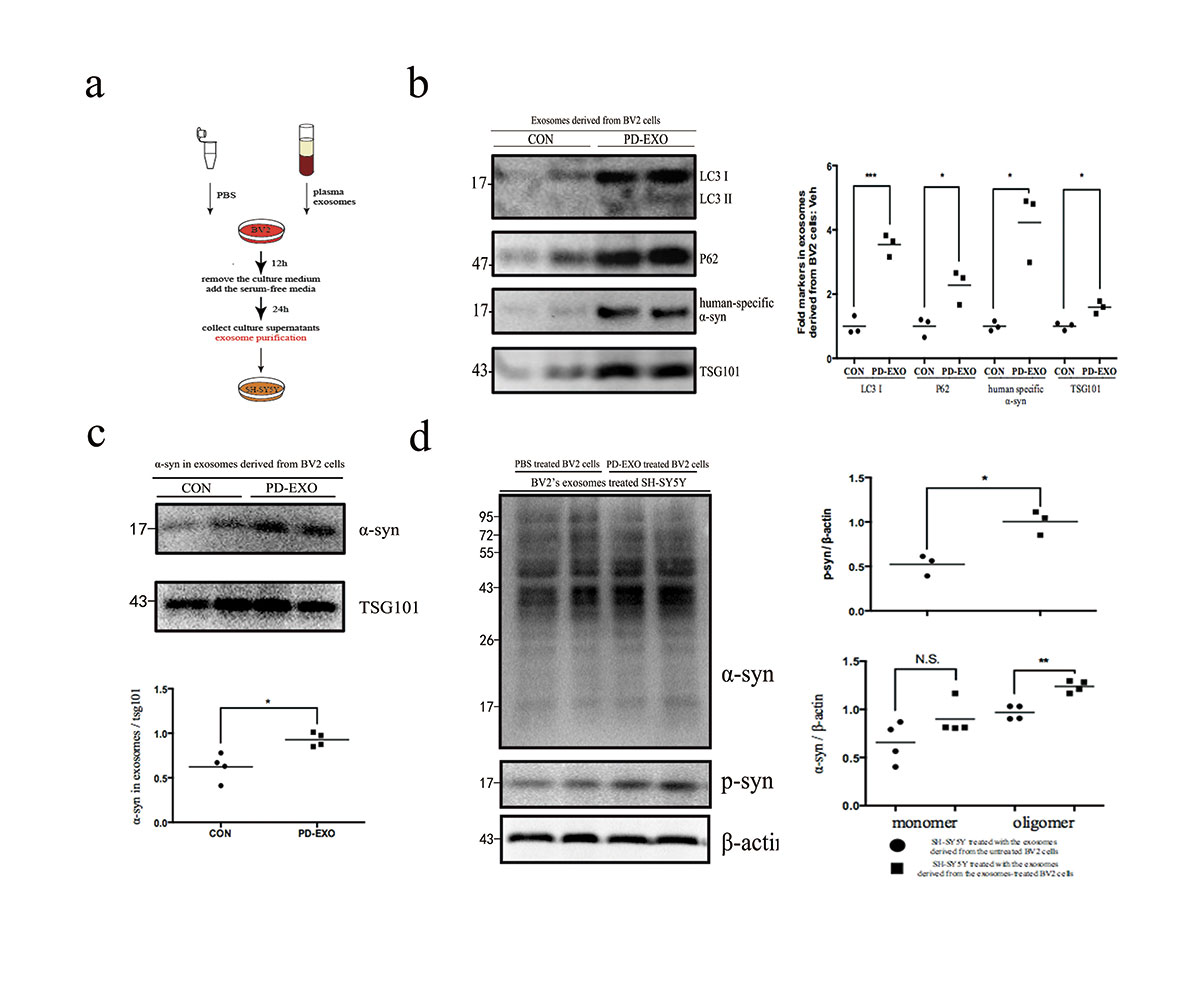Session Information
Date: Wednesday, September 25, 2019
Session Title: Physiology and Pathophysiology
Session Time: 1:15pm-2:45pm
Location: Les Muses, Level 3
Objective: It is highly desirable to make clear the underlying mechanism of exosomes-involved communication in the synucleinopathy pathogenesis.
Background: Emerging evidence suggests that exogenous pathogenic α-syn have prion-like properties [1]. Notably, We previously reported that plasma-derived exosomes from PD patients (PD-EXO) contain more amounts of α-syn oligomers and monomers compared to control exosomes. Moreover, we found that microglia display a high potency for uptake of PD-EXO, and therefore could be activated. Based on these findings, we hypothesized that PD-EXO modulate α-syn release in exosomes derived from microglia, thereby affecting microglia-to-neuron communication.
Method: PD-EXO was stereotaxically injected into the unilateral striatum of mice. After 2 week of exposure, brain sections were double-stained with the neuronal marker antibody MAP2 or TH and human-specific α-syn antibody. The expression of α-syn, phosphorylated-α-syn (p-syn) and P62 in the SNpc was determined by Western blot and immunofluorescence. PD-EXO was added to BV2 cells; then immunoblots of exosomes derived from BV2 culture media (BV-EXO) were stained with TSG101 and α-syn. Western blot of α-syn expression of SH-SY5Y cells exposed to BV-EXO was evaluated.
Results: Exogenous human α-syn were not restricted to the injection sites but progressed over time to the neighboring cortex. Positive human α-syn signal was detected, partly co-localizing with MAP2 in the cortex. Moreover, human α-syn is localized to dopaminergic neurons of the SNpc. The endogenous α-syn is extensively oligomerized after the internalization of human α-syn. Accumulation of p-syn and P62 was also apparent in the SNpc. Within BV-EXO, we observed that approximately 1.6-fold the exosomal marker TSG101 upregulation was quantified under PD-EXO treatment, suggesting that exosome abundance was enhanced. Human-specific α-syn has been identified in BV-EXO under PD-EXO treatment. Moreover, the addition of PD-EXO led to an increase in the levels of exosome-associated monomeric α-syn. Interestingly, in these PD-EXO-treated conditions, a significantly higher level of the aggregated form of α-syn in the SH-SY5Y cells was detected.
Conclusion: Activated microglia microglia play a crucial role in the transmission of α-syn via exosomal pathways, in additional to idea that the communication between microglia and neurons might be exemplified by the transport of exosomal cargo.
References: [1] Li, J. Y. et al. Lewy bodies in grafted neurons in subjects with Parkinson’s disease suggest host-to-graft disease propagation. Nat Med 14, 501-503, doi:10.1038/nm1746 (2008).
To cite this abstract in AMA style:
Y. Xia, T. Wang, GX. Zhang, JS. Huang, N. Xiong, L. Liu, F. Wan, L. Kou, SJ. Yin, JJ. Hu, YD. Sun, JW. Wu. Microglia as modulators of exosomal alpha-synuclein transmission [abstract]. Mov Disord. 2019; 34 (suppl 2). https://www.mdsabstracts.org/abstract/microglia-as-modulators-of-exosomal-alpha-synuclein-transmission/. Accessed April 26, 2025.« Back to 2019 International Congress
MDS Abstracts - https://www.mdsabstracts.org/abstract/microglia-as-modulators-of-exosomal-alpha-synuclein-transmission/



